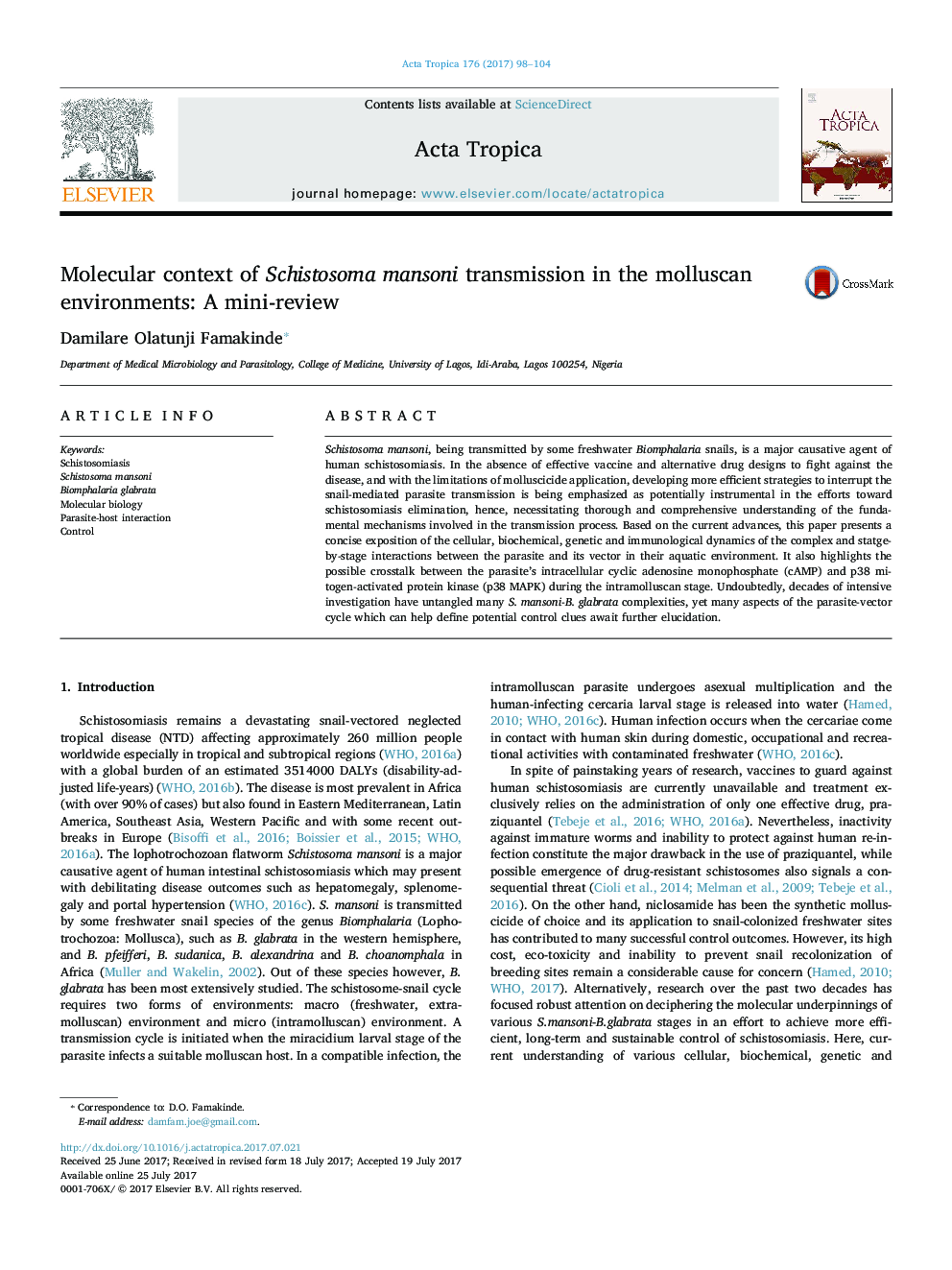| Article ID | Journal | Published Year | Pages | File Type |
|---|---|---|---|---|
| 5671005 | Acta Tropica | 2017 | 7 Pages |
â¢Release of pheromones by Biomphalaria may promote host-finding by S. mansoni.â¢Counteractive interaction between cAMP and p38 MAPK during miracidium-sporocyst development is described.â¢Transcripts for adaptive antigenic variation in sporocysts are epigenetically encoded.â¢A Guadeloupe resistance complex protein in B. glabrata modulates cercarial shedding.â¢Many factors involved in the S. mansoni-Biomphalaria cycle await further study.
Schistosoma mansoni, being transmitted by some freshwater Biomphalaria snails, is a major causative agent of human schistosomiasis. In the absence of effective vaccine and alternative drug designs to fight against the disease, and with the limitations of molluscicide application, developing more efficient strategies to interrupt the snail-mediated parasite transmission is being emphasized as potentially instrumental in the efforts toward schistosomiasis elimination, hence, necessitating thorough and comprehensive understanding of the fundamental mechanisms involved in the transmission process. Based on the current advances, this paper presents a concise exposition of the cellular, biochemical, genetic and immunological dynamics of the complex and statge-by-stage interactions between the parasite and its vector in their aquatic environment. It also highlights the possible crosstalk between the parasite's intracellular cyclic adenosine monophosphate (cAMP) and p38 mitogen-activated protein kinase (p38 MAPK) during the intramolluscan stage. Undoubtedly, decades of intensive investigation have untangled many S. mansoni-B. glabrata complexities, yet many aspects of the parasite-vector cycle which can help define potential control clues await further elucidation.
Graphical abstractDownload high-res image (196KB)Download full-size image
